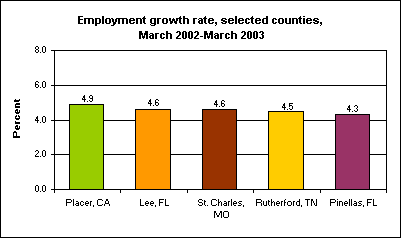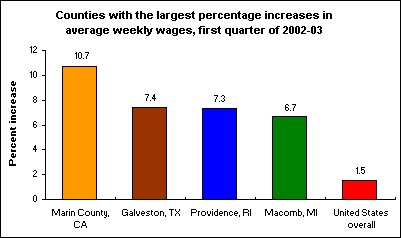Meet the Wal-Mart Board of Directors
David D. Glass
Chairman of the Executive Committee of the Board of Directors of Wal-Mart Stores, Inc. since February 2000. Mr. Glass served as Wal-Mart's President and Chief Executive Officer from January 1988 to January 2000. He has been a member of Wal-Mart's Board of Directors since 1977.
Stanley C. Gault
Retired Chairman of the Board of Directors of Goodyear Tire & Rubber Company from June 1991 to September 1996 and Chief Executive Officer of the Goodyear Tire & Rubber Company from June 1991 to January 1996. Mr. Gault previously served as Chairman of the Board of Directors and Chief Executive Officer of Rubbermaid Incorporated. He is also a director of Avon Products, Inc. and The Timken Company. He has been a member of Wal-Mart's Board of Directors since 1996.
S. Robson Walton
Chairman of the Board of Directors of Wal-Mart Stores, Inc. He has been a member of Wal-Mart's Board of Directors since 1978.
Roland Hernandez
Retired Chief Executive Officer and Chairman of the Board of Directors of Telemundo Group, Inc., a Spanish-language television station company from August 1998 to December 2000. From March 1995 to August 1998, he served as President and Chief Executive Officer of Telemundo Group, Inc. He is also a director of MGM Mirage, The Ryland Group, Inc., and Vail Resorts, Inc. He has been a member of Wal-Mart's Board of Directors since 1998.
M. Michelle Burns
Executive Vice President and Chief Financial Officer of Delta Air Lines, Inc. since August 2000. Prior to this appointment, she held various positions with Delta Air Lines, Inc., including: Senior Vice President - Finance and Treasurer, from January 2000 to August 2000; Vice President - Corporate Tax and Treasurer, from September 1999 to January 2000; and Vice President - Corporate Tax, from January 1999 to September 1999. From 1991 to January 1999, she was a partner in Arthur Andersen, LLP, an accounting firm. She is also a director of Orbitz, Inc. and Worldspan L.P. She has been a member of Wal-Mart's Board of Directors since 2003.
Jose Villarreal
Partner in the San Antonio office of the law firm of Akin, Gump, Strauss, Hauer & Feld, L.L.P. since August of 1994. He has been a member of Wal-Mart's Board of Directors since 1998.
John T. Walton
Chairman of True North Partners, L.L.C., which holds investments in technology companies. He has been a member of Wal-Mart's Board of Directors since 1992.
John Opie
Opie had a 39-year career with General Electric (GE). He also served on the GE Board of Directors. Opie serves on the boards for the Delphi Corp. and Stanley Works, is on the Board of Trustees of Michigan Tech University and has received the university's Board of Control Silver Medal and an honorary doctorate degree. He has been a member of Wal-Mart's Board of Directors since 2003.
James W. Breyer
Managing Partner of Accel Partners, a leading venture capital firm. He is also a director of RealNetworks, Inc. He has been a member of Wal-Mart's Board of Directors since 2001.
Jack C. Shewmaker
President of J-COM, Inc., a consulting company, since 1994, and a rancher. He is also a former Wal-Mart executive who retired in 1988. He has been a member of Wal-Mart's Board of Directors since 1977.
J. Paul Reason
President and Chief Operating Officer of Metro Machine Corporation, an employee-owned ship repair company, since July 2000. From December 1999 to June 2000, he served as Vice President-Ship Systems for Syntek Technologies, Inc., a technical and engineering professional services firm. He is a retired four-star Admiral in the U.S. Navy. He served as Commander-in-Chief of the U.S. Atlantic Fleet from December 1996 to September 1999, ending thirty-four years of Naval Service. He is also a director of Amgen Inc. and Norfolk Southern Corporation. He has been a member of Wal-Mart's Board of Directors since 2001.
H. Lee Scott, Jr
President and Chief Executive Officer of Wal-Mart Stores, Inc. since January 2000. Prior to this appointment, he has held various positions with Wal-Mart Stores, Inc. since September 1979, including: Vice Chairman and Chief Operating Officer, from January 1999 to January 2000; and Executive Vice President, President and Chief Executive Officer, Wal-Mart Stores Division, from January 1998 to January 1999. He has been a member of Wal-Mart's Board of Directors since 1999.
Dawn G. Lepore
Vice Chairman of Technology, Operations and Administration for Charles Schwab Corp., a financial holding company, since March 2002. Prior to this appointment, she has held various positions with Charles Schwab Corp., including: Vice Chairman of Technology and Administration, from December 2001 to March 2002; Vice Chairman and Chief Information Officer, from July 1999 to December 2001; and Executive Vice President and Chief Information Officer, from October 1993 to July 1999. She is also a director of eBay Inc. She has been a member of Wal-Mart's Board of Directors since 2001.
Thomas M. Coughlin
Executive Vice President and President and Chief Executive Officer of Wal-Mart Stores Division and SAM'S CLUB USA since August 2002. Prior to this appointment, he has held various positions with Wal-Mart Stores, Inc. since August 1978, including: Executive Vice President, President and Chief Executive Officer, Wal-Mart Stores Division, from January 1999 to August 2002; and Executive Vice President and Chief Operating Officer, from January 1998 to January 1999. He is also a director of ChoicePoint Inc. He has been a member of Wal-Mart's Board of Directors since 2001.
Source: Wal-Mart.






